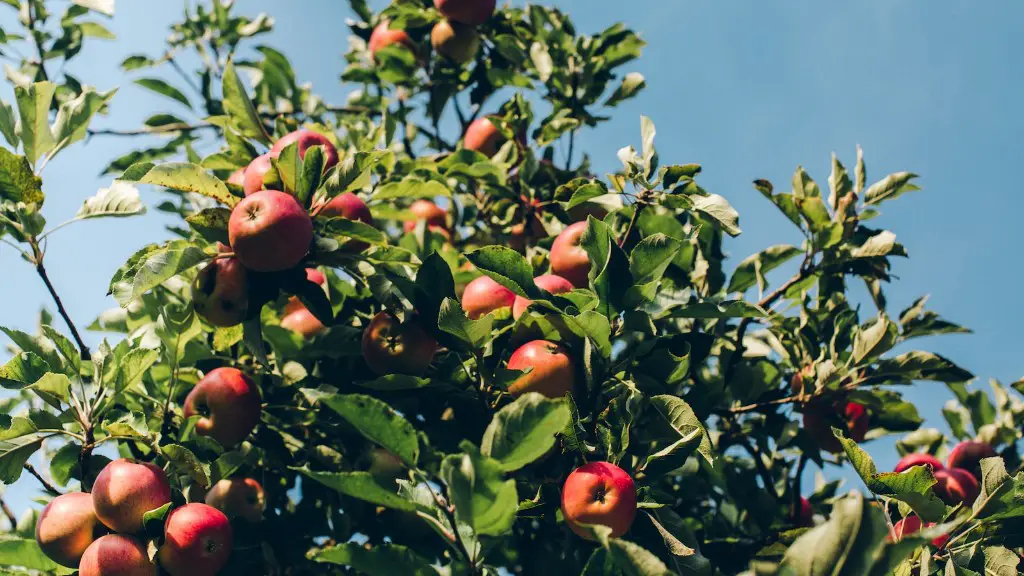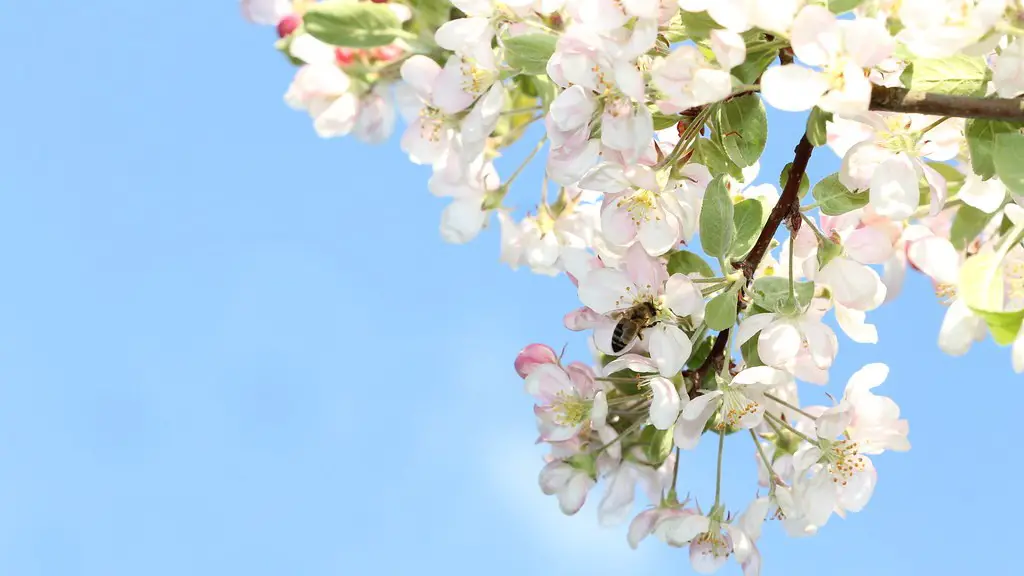The lemon tree is an iconic flowering evergreen tree that can grow for over one hundred years. The lemon tree can reach heights of up to 20ft and is native to mainly India. How long does a lemon tree grow? It depends on many factors such as the environment, care, and season.
A lemon tree grown in ideal conditions can reach full maturity in as little as three years. Ideal conditions include full sun, moist soil and warm temperatures. In the wild, a lemon tree can live to be over one hundred years old and with proper care, the average life span of a lemon tree is between fifteen to twenty years.
Lemon trees require specific environmental conditions to thrive. They need plenty of direct sunlight, protection from wind and temperatures above freezing. They also need periodic watering and an acidic soil pH ranging from 6.1 to 6.5. If any of these variables aren’t met, the lemon tree’s growth rate will be significantly lowered.
Lemon trees flower all year round but the maximum growth occurs in spring and summer. During this time, the lemon tree’s growth is largely determined by the amount of water and nutrients it receives. If the lemon tree is provided too much water and nutrients, it will grow rapidly and become stunted due to an overdose of minerals. On the other hand, if the lemon tree doesn’t receive enough water and nutrients, its growth rate will be significantly slowed.
Lemon trees are relatively low maintenance and can grow at a moderate speed if provided with the right conditions. Proper care can help lemon trees achieve maximum growth. It includes pruning excess foliage, providing adequate soil drainage, using organic fertilizers, and controlling pests and diseases.
Overall, lemon trees have the potential to grow quickly in ideal conditions. With the right environmental and care conditions, the growth rate of a lemon tree can be maximized, giving it the ability to reach heights of up to 20ft in just a few years.
Lemon Tree Reproduction
Lemon trees reproduce asexually and sexually. To reproduce asexually, lemon trees either grow from existing roots or from bud grafts. Bud grafts involve taking a well established lemon tree and cutting off a section of its trunk. This section is then placed into the empty space of another tree’s trunk, resulting in a new lemon tree growing from the second tree’s root system.
Sexual reproduction occurs when the lemon tree blooms flowers. After a bee has successfully pollinated the flowers, the petals will fall off and form a small round fruit containing seeds. When the fruit is fully grown, the seeds can be collected, planted and nurtured until a new lemon tree has grown.
It’s important to note that while both asexual and sexual reproduction are possible, the quality of the lemon tree produced from sexual reproduction will be far superior to the quality of the lemon tree produced from asexual reproduction.
In general, lemon trees grown from sexual reproduction will have better disease resistance, larger fruit and produce more flowers than those grown from asexual reproduction. This is why many lemon tree farmers opt to use sexual reproduction over asexual reproduction when reproducing their lemon tree crops.
Lemon Tree Fertilization
Fertilizing your lemon tree is essential if you want it to grow and produce quality fruit. The fertilizer should be rich in nitrogen and potassium but low in phosphorus. The type of fertilizer you use will depend on the age of the lemon tree and its growth stage.
For young lemon trees, a light fertilizer such as fish emulsion or liquid seaweed should be used as this will help the tree to focus its energy on developing strong roots. As the lemon tree matures, a stronger fertilizer with a higher nitrogen content should be used. For mature lemon trees, a granular fertilizer is best as it will slowly break down over a period of weeks, providing the tree with a steady dose of nutrients.
It’s also important to consider other factors such as water and soil pH when fertilizing lemon trees. If the pH of the soil is too high or too low, the tree may not be able to absorb the nutrients from the fertilizer. Therefore, it’s important to test and adjust your soil pH if necessary before adding any fertilizer.
Fertilizing lemon trees correctly is essential if you want to maximize their growth potential. By using the right type and amount of fertilizer, you can ensure that your lemon tree has all the nutrients it needs to thrive and produce a delicious harvest.
Lemon Tree Pest Control
Pest control is crucial for the healthy growth of lemon trees. Common pests of lemon trees include aphids, whiteflies, mealybugs, mites, and scale insects. These pests can seriously damage the tree’s growth rate and fruit production.
Organic pest control methods are recommended over the use of chemicals as the latter can damage the soil and water quality. These methods include treating the tree with natural predators such as ladybugs, lacewings, and parasitic wasps, applying organic insecticides, and spraying the trees with a mixture of garlic, neem oil and soap.
Another method of controlling pests is through cultural control. This entails maintaining a tidy environment around the lemon tree and removing any potential breeding grounds for pests. This includes ensuring that grass and weeds are mowed, removing any dead plant matter, and reducing areas of water and shade that may attract pests.
It’s also important to regularly inspect the tree for signs of pest damage. If any pests are found, it’s important to act quickly and apply an effective control method to prevent the infestation from getting worse.
Lemon Tree Pruning
Pruning is crucial for healthy and efficient lemon tree growth. Pruning assures that the tree can access more sunlight, increasing the amount of photosynthesis and subsequent fruit production. Pruning also encourages new growth and reduces the amount of time needed to harvest the lemons.
When pruning a lemon tree, it’s important to remove dead, dying or damaged branches first. This will ensure that no disease can spread to the healthy branches. Next, prune away any crossing or rubbing branches or branches growing in the wrong direction. Finally, you should trim off any excessive lateral growth that is blocking sunlight from reaching the center of the tree.
It’s also important to understand pruning techniques such as topping, heading, and thinning. Topping involves cutting off the top or apex of the tree to produce a round shape. Heading can refer to either cutting off the tips of branches to decrease size or cutting off larger branches. Thinning is the removal of smaller branches to increase air circulation and sun exposure.
In general, pruning should be done in early spring before the lemon tree starts to bloom. However, the exact timing may vary depending on the climate in which the tree is growing.
Lemon Tree Harvesting
Lemon trees can start to produce lemons as early as three years after planting. The exact timeline for harvesting depends on the variety of lemon tree, the climate and care conditions, and the amount of fertilization provided.
Once the lemons are ready for harvest, the fruits should be picked when they are slightly green in color. It’s best to harvest in the morning before the sun gets too hot as the heat can cause lemons to dry out and lose their juiciness.
When harvesting, it’s important to use the right tools. Pruning shears or garden scissors work well for smaller trees, while ladders should be used for larger trees with higher branches. It’s also important to be gentle when harvesting so as not to damage the tree or rip branches off.
Harvesting lemon trees correctly is an important step to maintain healthy crop production. Once the fruits are picked, you can enjoy their juicy, tart flavor just as nature intended.




